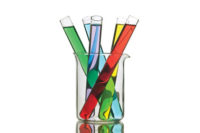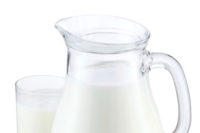China Finds Inconsistencies in Coloring Labeling
September 15/Hong Kong/Asian Business Newsweekly -- "The objective of a study was to assess synthetic colors in common snack foods consumed by children and the accuracy of labelling. Dietary exposure to synthetic colors was estimated using food frequency questionnaire data obtained from primary school children in Hong Kong," investigators in Hong Kong, China, report.
"The concentration of synthetic colors in food items consumed was determined by HPLC with photodiode array detection. Dietary exposure to synthetic colors for an average primary school student was considerably lower than the acceptable daily intake for their age. Estimates fell below the maximum acceptable daily intake established by the Food and Agriculture Organization/World Health Organization (FAO/WHO) and European Food Safety Authority (ESFA)," wrote K.Y.W. Lok and colleagues, Chinese University of Hong Kong.
The researchers concluded, "However, data from HPLC analyses showed that several synthetic colours, which were labelled as being present in the food, were not detected and vice versa."
Lok and colleagues published their study in Food Additives & Contaminants Part B - Surveillance ("Color Additives in Snack Foods Sonsumed by Primary School Children in Hong Kong." Food Additives & Contaminants Part B - Surveillance, 2010;3(3):148-155).
For additional information, contact K.Y.W. Lok, Chinese University of Hong Kong, Dept. of Med & Therapeutic, Hong Kong, Hong Kong, People's Republic of China.
From the September 20, 2010, Prepared Foods E-dition
Looking for a reprint of this article?
From high-res PDFs to custom plaques, order your copy today!




